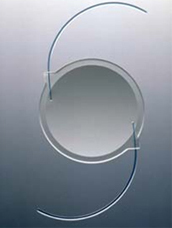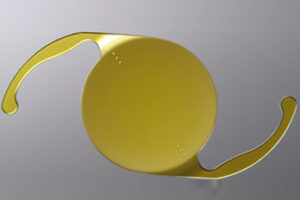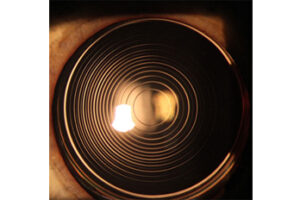Cataract
What is a cataract?
The clouding of the natural lens of the eye is referred to as a cataract. Because light cannot focus on the retina after travelling through the lens due to the cataract, vision becomes blurry.
Common symptoms of a cataract:
- Painless blurring of vision
- Glare or light sensitivity
- Frequent changes in eyeglass prescription
- Poor night vision
Needing a brighter light to read - Double vision in one eye
- Fading colours
What causes a cataract?
- The most common cause is due to aging and referred to as a ‘senile cataract’.
- Other common causes are:
- Family history
- Medical problems, such as diabetes
- Long-term use of medications, such as steroids
- Injury to the eye
- Congenital, since birth
- Previous eye surgery
- Long-term unprotected exposure to sunlight
Treatments
Cataracts can be removed at any age and stage. There is no longer a requirement to hold off on surgery until the cataract “ripens” or until you become blind. In fact, it is ideal to have an intraocular lens (IOL) implant placed to restore vision when the cataract begins to impair your regular activities or vision.
Surgical removal of the cataract-afflicted lens is necessary. Phacoemulsification, also known simply as “phaco,” is a common form of extra capsular cataract extraction that the general public associates with laser cataract surgery.
Types Of Intraocular Lens Available At Singh Eye Care
Monofocal Lens:

These lenses are the most commonly implanted lenses today. They have equal power in all regions of the lens and can provide high-quality distance vision, usually with only a light pair of spectacles. Monofocal lenses do not correct astigmatism and require corrective lenses for all near tasks, such as reading or writing.
Toric Lens:

Toric lenses have more power in one specific region in the lens to correct astigmatism as well as distance vision for many individuals. While toric lenses can improve distance vision and astigmatism, they still require corrective lenses for all near tasks, such as reading or writing.
EDOF

The extended-depth-of-focus (EDOF) intraocular lenses represent a modern lens technology that primarily improves intermediate visual acuity, useful for computer work, while providing good distance and near vision. You might require corrective lenses only for very small prints.
TRIFOCAL

One of the most recent developments in lens technology is the use of trifocal lenses. These lenses include various zones with varying powers that enable some people to see clearly at a range of distances, including far, intermediate, and close up; as a result, patients no longer need to wear glasses. Trifocal lenses are not right for everyone, despite their promise. Compared to monofocal or toric lenses, they may produce noticeably greater glare.
Do’s and Don’t
Cataract surgery is a common procedure to remove the cloudy lens of the eye and replace it with an artificial one. While the procedure is generally safe and effective, there are some important do’s and don’ts for cataract patients to follow before and after surgery:
Do’s:
- Follow your doctor’s instructions regarding medication, eye drops, and other pre-operative preparations.
- Wear sunglasses with UV protection to protect your eyes from the sun.
- Use a protective shield to cover your eye at night or during naps to prevent accidental rubbing or injury.
- Keep your eyes clean and avoid rubbing or touching them excessively.
- Attend follow-up appointments with your doctor to monitor your progress and address any concerns.
Don’t
- Don’t drive or operate heavy machinery until your doctor has given you clearance to do so.
- Don’t engage in strenuous physical activity, such as heavy lifting or exercise, until your doctor has cleared you to do so.
- Don’t swim or submerge your head in water for at least a week after surgery to avoid infection.
- Don’t touch or rub your eyes, which can increase the risk of infection and other complications.
- Don’t skip any post-operative appointments or follow-up care.
Frequently Asked
Questions.
Visual problems may include the following changes :
- Being sensitive to glare
- Cloudy, fuzzy, foggy, or filmy vision
- Difficulty seeing at night or in dim light
- Double vision
- Loss of color intensity
- Problems seeing shapes against a background or the difference between shades of colors
- Seeing halos around lights, Cataracts generally lead to decreased vision, even in daylight.
- Frequent changes in eyeglass prescription
- Diabetes
- Eye inflammation
- Eye injury
- Family history of cataracts
- Radiation exposure
- Smoking
- Surgery for another eye problem
- Long-term use of corticosteroids (taken by mouth) or certain other medications
- Too much exposure to ultraviolet light (sunlight) In many cases, the cause of cataract is unknown.
The Night Before Surgery
Don’t eat or drink anything after midnight the night before your surgery. This includes water, coffee, chewing gum, and mints. If you have been told to continue your daily medication, take it only with small sips of water. Make sure you follow any other instructions your doctor gives you.
Day of your Surgery
Have someone drive you to and from the outpatient surgery clinic or hospital. Plan to be there for about 2 to 3 hours. The surgery is brief. But the hospital staff needs a little time to get you ready for surgery. When you arrive, you may have to sign a consent form. This form explains the risks of surgery.
Just before surgery, your doctor will give you medicine that will relax you and keep you from feeling pain. You may sleep lightly.
First 24 Hours
After surgery, you’ll rest in a recovery area for less than an hour. Even though you may feel fine, you should take it easy. Your doctor will let you know what you should and shouldn’t do once you get home. You may need to wear eye protection the first day. Also, remember to take any eyedrops or other medicine your doctor prescribes.
Back at Home
Spend your first day relaxing at home. Watch TV read, or talk to a friend.
- Don’t rub your eye.
- Don’t lift anything that makes you strain.
- Don’t drink alcohol within the first 24 hours
Getting back in action
You can get back to work in a weeks time after surgery
Cataracts are commonly seen in older people over the age of 60 years. They are rarely seen in infants and young adults.
Cataract surgery is usually performed when the cataract interferes significantly with your vision and your daily routine. You need to visit the eye doctor regularly to monitor its progress.
